Graduating from Central Saint Martins in 2021, Belgian designer Mathilde Wittock has gone from strength to strength thanks to her visionary creativity and undeniable passion. ICON explores her journey so far
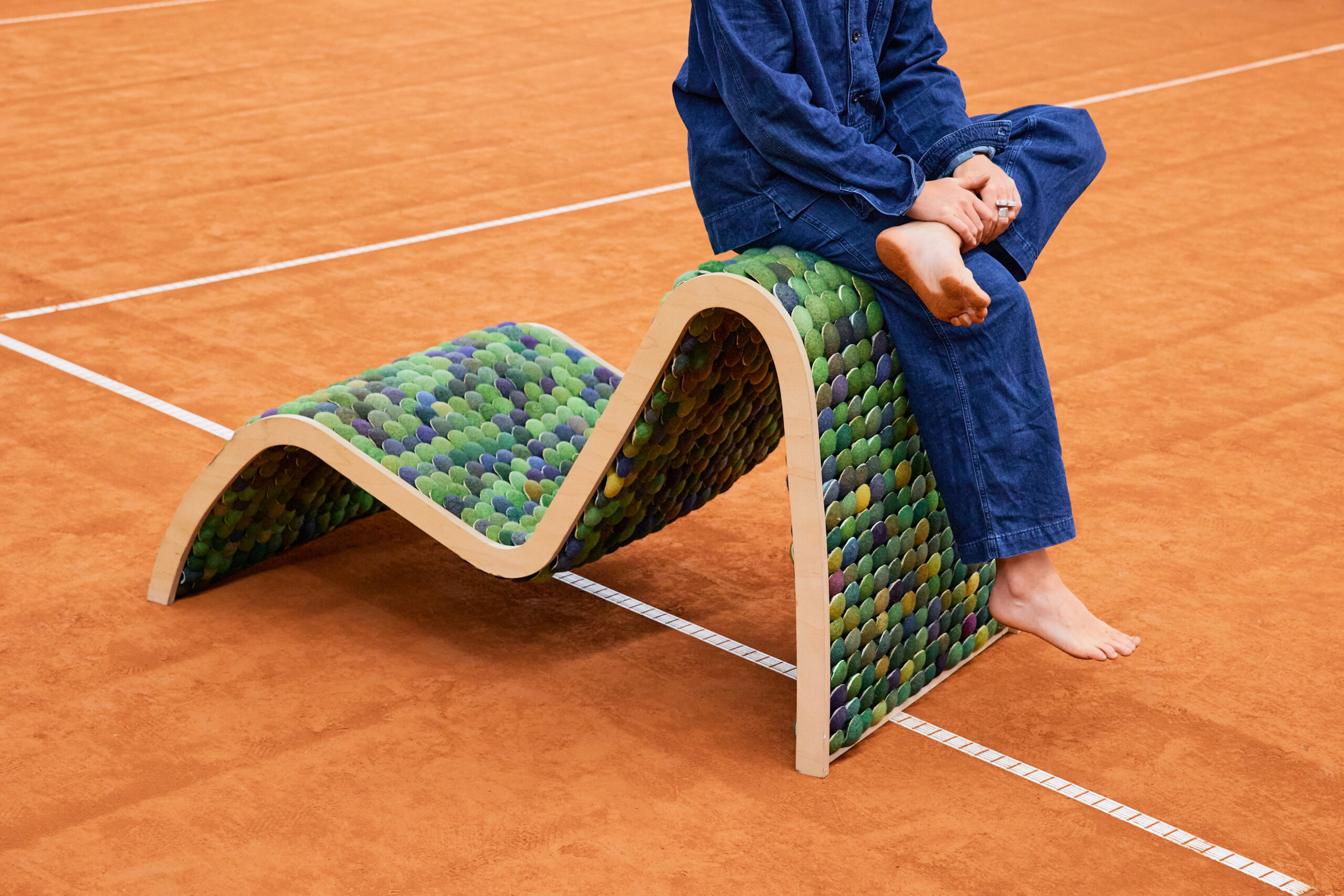 Soundbounce by Mathilde Wittock is a surface material made from discarded tennis balls and can be applied to both furniture and wall panel formats. Photography by Mathilde Wittock
Soundbounce by Mathilde Wittock is a surface material made from discarded tennis balls and can be applied to both furniture and wall panel formats. Photography by Mathilde Wittock
Words by Roddy Clarke
Starting out as a designer today can be a tough challenge. Navigating a rapidly changing world while finding your creative identity in the face of environmental emergencies can be overwhelming. And, added to this, collaborations can be harder to come by as brands become more risk-averse, working with established designers with which they may already have built a relationship with. However, one designer who is making her mark on the industry is Mathilde Wittock – a Belgian talent who graduated from Central Saint Martins in 2021 with a BA in Product Design and an MA in Biodesign.
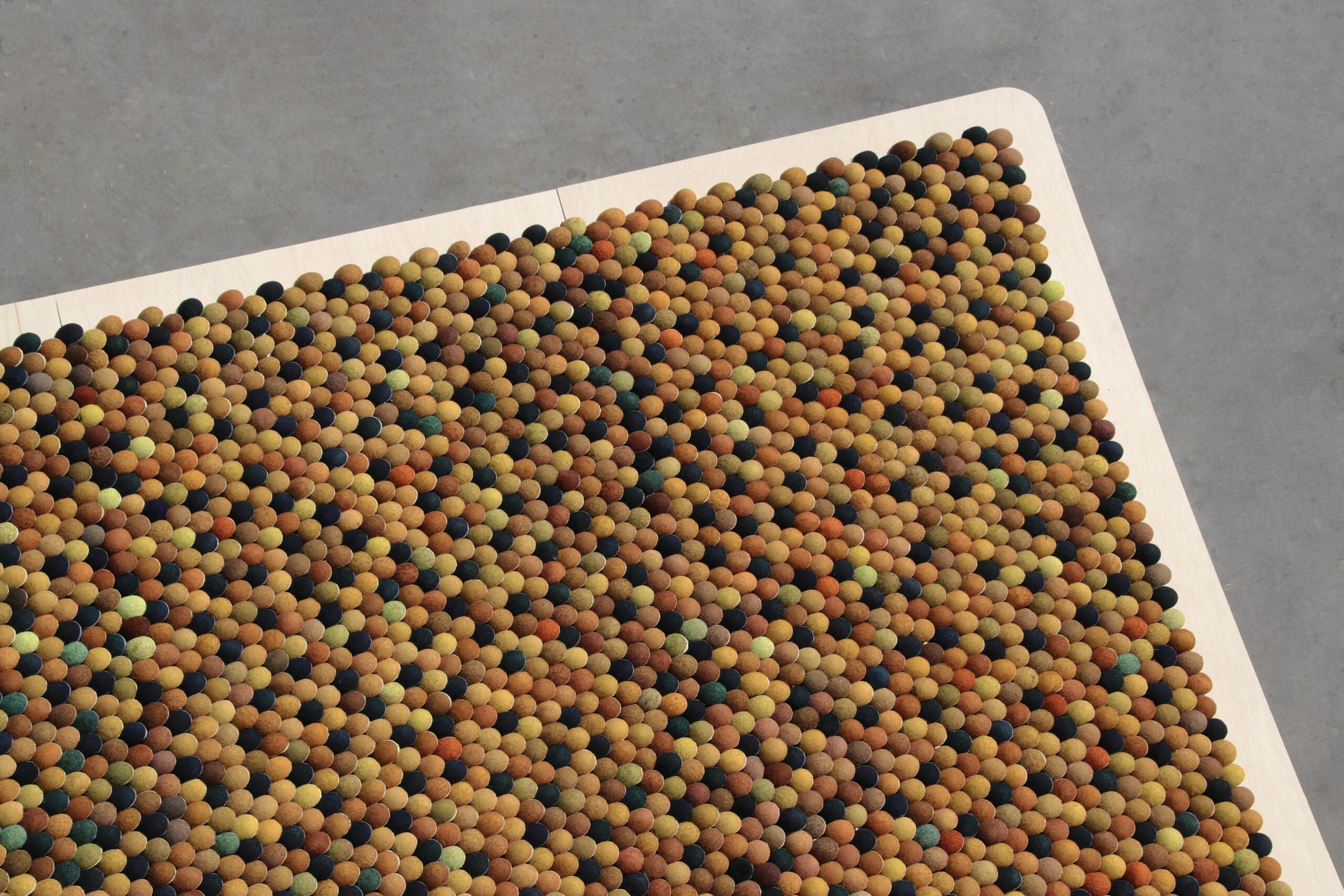 Not only does Soundbounce catch the eye visually, it also boasts superb sound-absorption qualities thanks to the rubber and felt composition of the tennis balls. Photography by Mathilde Wittock
Not only does Soundbounce catch the eye visually, it also boasts superb sound-absorption qualities thanks to the rubber and felt composition of the tennis balls. Photography by Mathilde Wittock
Since her graduation, Wittock has embarked on a series of projects combining her personal passions with extensive material research to find solutions centred on social and regenerative values. Her degree project, titled Soundbounce, stemmed from the designer’s own sensitivity to noise within her surroundings and resulted in an acoustic material made from recycled tennis balls. With the project further developing to see the material utilised in wall panel and furniture applications, Wittock states the project also seeks to propose part of a solution to the 400 million balls that are discarded each year, of which only 1% are being recycled. ‘A tennis ball takes five days to produce and requires about 24 different steps,’ she says, ‘yet it has a lifespan of only about nine games, meaning tennis, as a sport, has a huge waste issue.’
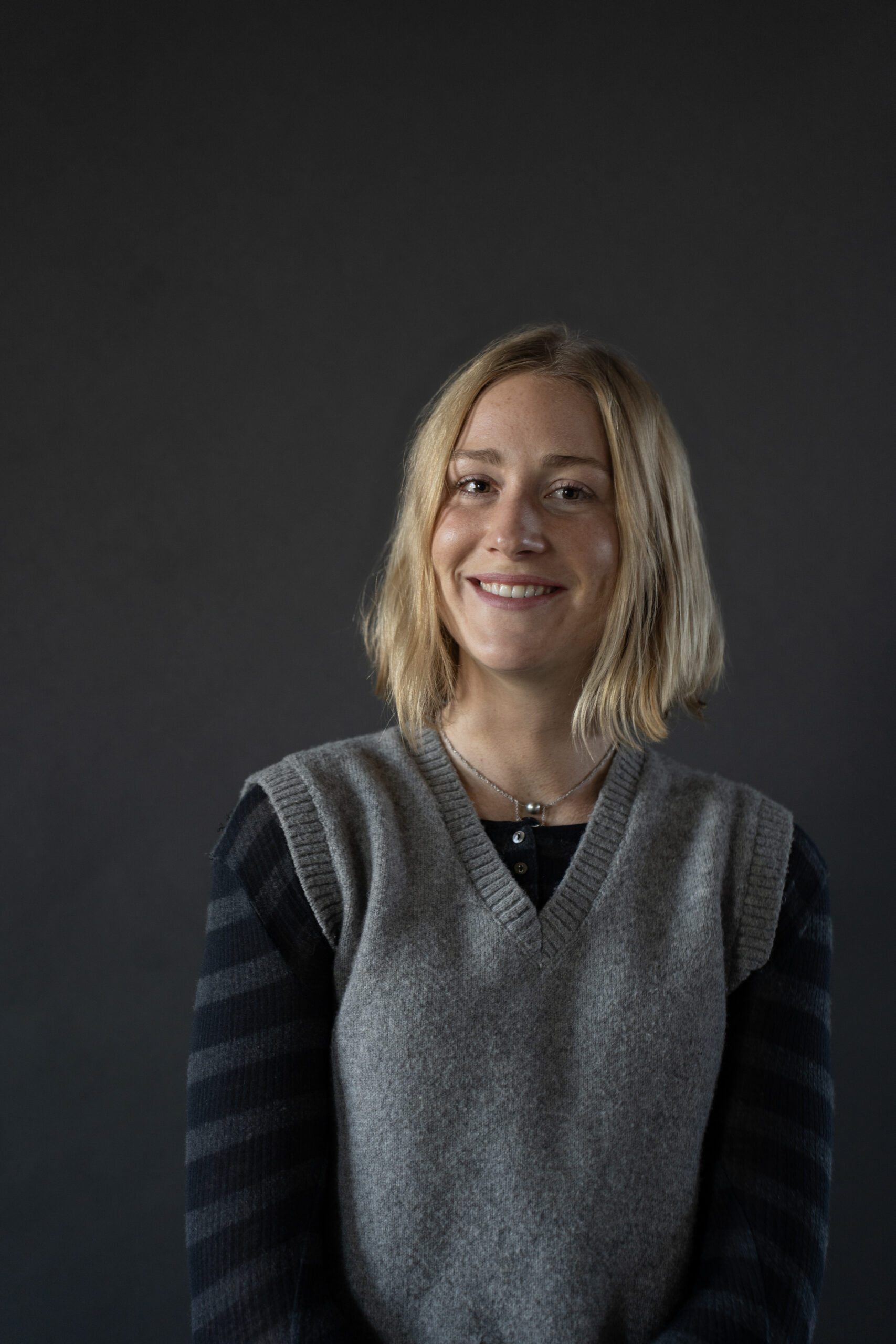 A keen player of tennis herself, Wittock is presenting a solution to the waste issue that plagues the sport today. Photography by Mathilde Wittock
A keen player of tennis herself, Wittock is presenting a solution to the waste issue that plagues the sport today. Photography by Mathilde Wittock
Taking the discarded balls, the designer then cuts them open along the white line while removing the brand’s logo to allow the material to be utilised in a variety of ways. Wittock subsequently creates furniture frames and panelling with integrated holes in which the deconstructed tennis balls are placed to create a rolling surface that acts as an alternative to textiles and padding while offering excellent sound absorption. Speaking about the reasons behind her methodology to repurpose this non-biodegradable material, Wittock says, ‘Reuse methods usually involve total transformation, like burning the felt and grinding the rubber for other uses and therefore degrading its technical properties. Given its shape and composition, I saw a life for the tennis ball in tactile and acoustic functionality.’
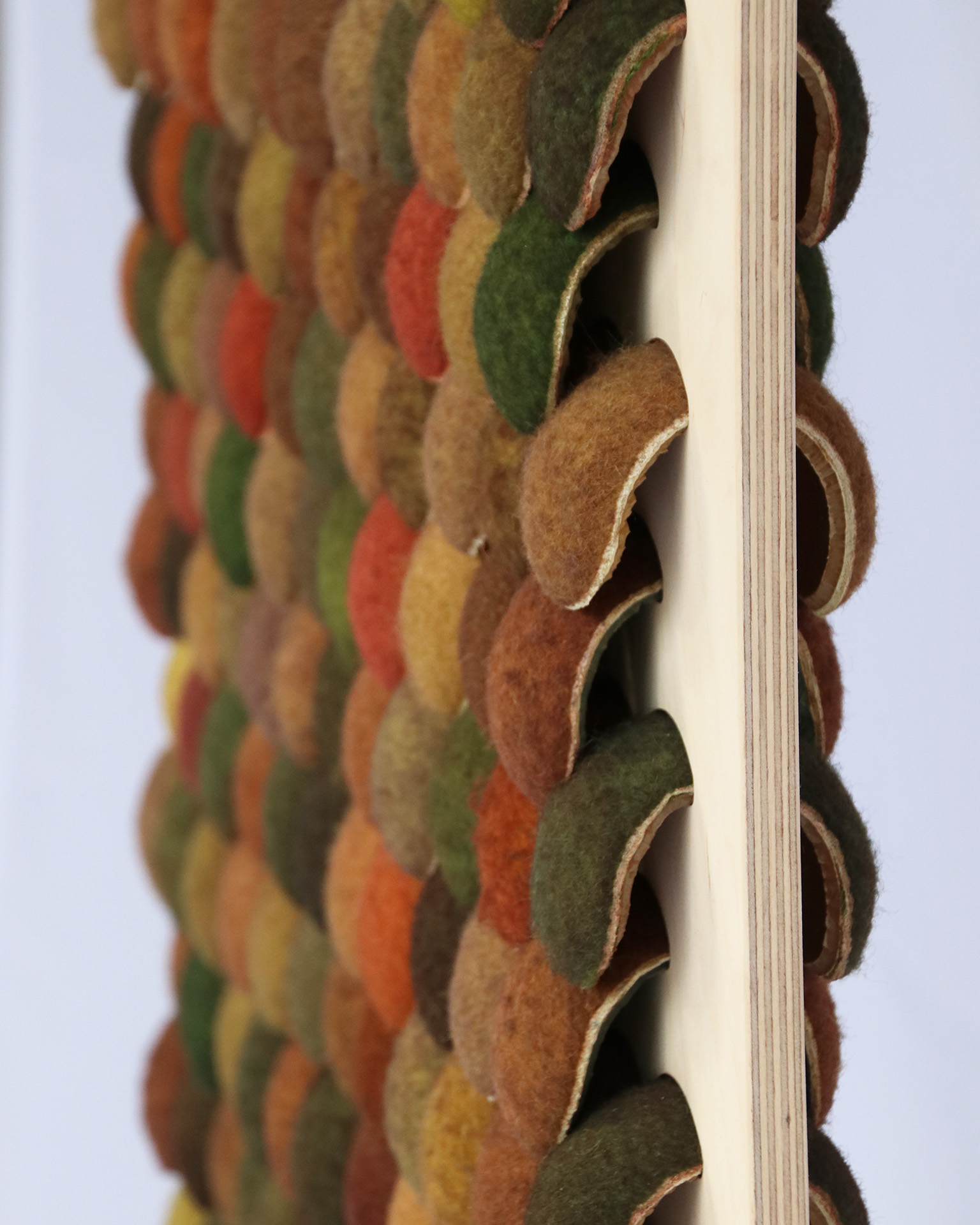 The balls are cut down the middle before being inserted into frames making them easy to disassemble if required. Photography by Mathilde Wittock
The balls are cut down the middle before being inserted into frames making them easy to disassemble if required. Photography by Mathilde Wittock
With the combination of rubber and felt acting as an ideal material for soundproofing spaces, Wittock’s desire to create a product that could provide a solution to noise pollution remains very personal. ‘Being hypersensitive to noise, the tennis ball presented an opportunity to address this issue,’ she comments. ‘And, with noise pollution an ever-increasing problem, its effects are still largely unknown, but it is evident it negatively impacts physical and mental health so creating solutions for this is key.’ With no glue being used, the system Wittock has created allows for disassembly and a new visual identity for the user. ‘My design maintains circularity, ensuring the ball’s life doesn’t end with my design,’ she adds.
With this conscious mindset governing each design decision she makes, Wittock is eager to make waves in the industry. Striving for change, she believes that regenerative materials are the gold of tomorrow; both those made from waste and those from biomaterials. ‘I envision a world where materials reclaim their primary place in design and where sourcing and transformation are both local and regenerative,’ she continues. ‘In landfills we can find everything we need. Why continue to dig elsewhere and destroy beautiful landscapes when everything is within reach, ready to be transformed. I see a world where our cities become our gold mines, and our rural countryside becomes our new alternative – a space to grow materials locally and regeneratively.’
 Wittock’s work is asking us all to reevaluate materials and see them in a new light, with an unconventional approach resulting in beautiful and practical outcomes. Photography by Mathilde Wittock
Wittock’s work is asking us all to reevaluate materials and see them in a new light, with an unconventional approach resulting in beautiful and practical outcomes. Photography by Mathilde Wittock
While the last three years have been a testament to Wittock’s passion and determination, she also alludes to the vital support she has received along the way, most notably from GREEN GRADS, a platform for UK graduates focused on the environment. Founded and curated by journalist Barbara Chandler, Wittock speaks of how it made the project visible to a larger audience through exhibitions and Chandler’s connection within the media. ‘To me, confidence is key to pursuing your passion and she gave me access to it,’ Wittock says. ‘She helped me build confidence in myself and my work, giving me the courage to pursue my dream. With GREEN GRADS, she has built not only a community of emerging designers but also a community of confident makers willing to create for our planet.’
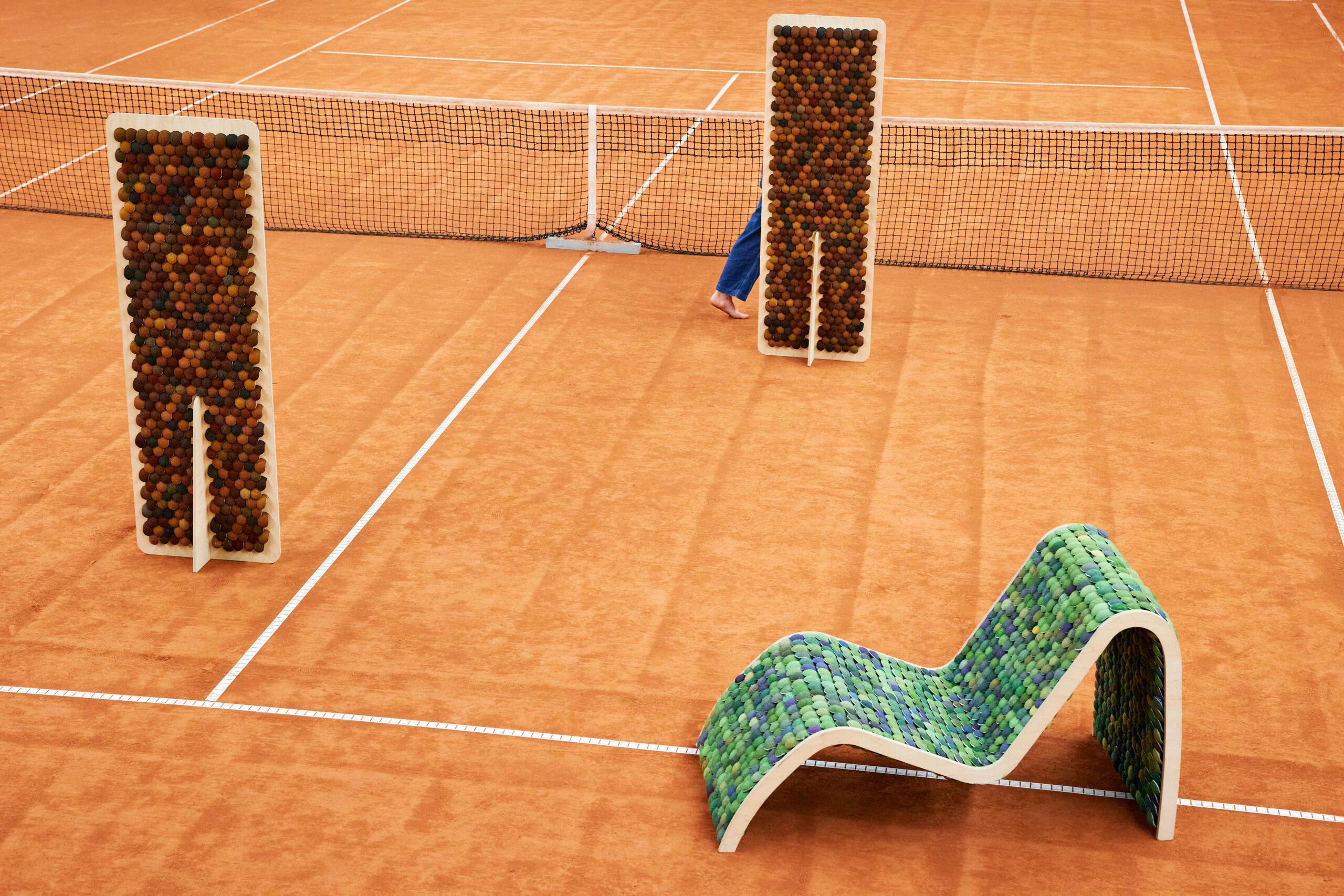 The Soundbounce furniture collection currently includes a chair, screens and a bench alongside a series of wall panels. Photography by Mathilde Wittock
The Soundbounce furniture collection currently includes a chair, screens and a bench alongside a series of wall panels. Photography by Mathilde Wittock
With the platform acting as a vital springboard at the beginning of Wittock’s career, she looks ahead to the future with a resolute positivity. ‘My dream is to continue revalorising materials through science, design and art,’ she concludes. ‘I love materials and what they convey through smell, touch, colour, taste and sound. To me, materials are as precious as the objects they constitute. And, as I am passionate about sound and its influence on organisms on a macro and microscopic scale, I hope that in five years to have built a team of researchers in material sciences alongside designers to develop ecological and emotional sensory solutions for interior environments.’ Witnessing Wittock’s dedication to instigate and create change leaves us feeling hopeful that in challenging times, up-and-coming creative talents have the energy and vision to play a vital and critical role in the creation of a more positive future for all.
Get a curated collection of design and architecture news in your inbox by signing up to our ICON Weekly newsletter


















